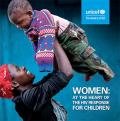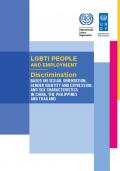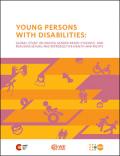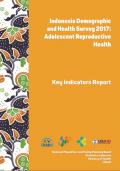What's New
Displaying results 1461 - 1470 of 4913

Resource | Publications,
UNICEF's new report, Women: At the Heart of the HIV Response for Children, highlights the sobering fact that, contrary to popular opinion, the AIDS crisis is far from over. Even as the disease beats a slow retreat due to the significant and commendable progress on many fronts in the last decade, it still strikes at people of all ages, including babies, young children and particularly adolescents. It continues to thrive among the marginalized and the powerless. Women and girls bear the brunt of the disease, both as the majority of those infected, and as those caring for others. The report contains 17 essays from women leaders in the fight against HIV, from activists living with HIV to prominent political and corporate figures.

Resource | Guidelines,
These guidelines aim to provide evidence-based recommendations on the care and treatment of persons diagnosed with chronic hepatitis C virus infection. They update the care and treatment section of the WHO Guidelines for the screening, care and treatment of persons with hepatitis C infection issued in April 2016. The 2017 Guidelines on hepatitis B and C testing update the screening section.

Resource | Publications,
According to a new United Nations study, high levels of lesbian, gay, bisexual, transgender and intersex (LGBTI) people – 21 percent of respondents in China, 30 percent in the Philippines and 23 percent in Thailand – reported being harassed, bullied or discriminated against by others while at work because of their sexual orientation, gender identity, expression and sex characteristics (SOGIESC).
The study was undertaken jointly by the United Nations Development Programme (UNDP) and the International Labour Office (ILO) and was launched today at the Queer Asia Conference hosted by the SOAS University of London. It involved a desk review as well as collection of quantitative data from 1,571 respondents and qualitative data from in-country focus group discussions with 151 participants. The report, entitled LGBTI People and Employment: Discrimination Based on Sexual Orientation, Gender Identity and Expression, and Sex Characteristics in China, the Philippines and Thailand, makes concrete recommendations for governments, the private sector, civil society, multilateral agencies and non-government organizations to take action to improve the situation for LGBTI people in employment settings.

Global Study on Ending Gender-based Violence and Realizing Sexual and Reproductive Health and Rights
Resource | Publications,
Young Persons with Disabilities: Global Study on Ending Gender-based Violence and Realizing Sexual and Reproductive Health and Rights contains new qualitative, global research. This study provides an analysis on the situation of young persons with disabilities concerning discrimination and gender-based violence, including the impact on their sexual and reproductive health and rights. It also provides an assessment of legal, policy and programming developments and specific good practices in service delivery as well as best-standard prevention and protection measures. Finally, policy and programming recommendations are provided to assist in greater promotion of the rights of young persons with disabilities, with a particular emphasis on preventing and responding to gender-based violence, and realizing sexual and reproductive health and rights.

Resource | Publications,
The publication of the ARH key indicators of the 2017 Indonesia Demographic Health Survey (IDHS) provides useful information for designing policies and programs to address the ARH issues in Indonesia. As the previous surveys, the 2017 IDHS is carried out by the National Population and Family Planning Board, Statistics Indonesia, and the Ministry of Health. The data and information presented in this publication are expected to be used as inputs for planning and evaluating Indonesia’s PFPFD program. This publication can also be used as a reference.

Indonesia: Demographic and Health Survey 2017 Adolescent Reproductive Health - Key Indicators Report
Resource | Publications,
The publication of the ARH key indicators of the 2017 Indonesia Demographic Health Survey (IDHS) provides useful information for designing policies and programs to address the ARH issues in Indonesia. As the previous surveys, the 2017 IDHS is carried out by the National Population and Family Planning Board, Statistics Indonesia, and the Ministry of Health.
The data and information presented in this publication are expected to be used as inputs for planning and evaluating the Indonesia's PFPFD program. This publication can also be used as a reference.

Indonesia Demographic and Health Survey 2017: Adolescent Reproductive Health (Key Indicators Report)
Resource | Publications,
The adolescent reproductive health (ARH) program is part of the Indonesia’s Population, Family Planning and Family Development (PFPFD) program.
The publication of the ARH key indicators of the 2017 Indonesia Demographic Health Survey (IDHS) provides useful information for designing policies and programs to address the ARH issues in Indonesia. As the previous surveys, the 2017 IDHS is carried out by the National Population and Family Planning Board, Statistics Indonesia, and the Ministry of Health.

Resource | Publications,
This document provides an overview of the latest available UNAIDS data on youth and HIV, including new indicators reported for the first time on consent requirements to access services, access to comprehensive sexuality education, and youth participation in the HIV response. It also provides an explanation of youth participation through the three-lens approach, engaging youth as beneficiaries, partners and leaders, adapted to the HIV response, as a recommendation for policy-makers, programmers, implementers and other stakeholders to strive for better and greater youth participation, fulfil the commitments in the 2016 Political Declaration, and end AIDS by 2030.

Resource | Publications,
The global AIDS response is at a precarious point—partial success in saving lives and stopping new HIV infections is giving way to complacency. At the halfway point to the 2020 targets, the pace of progress is not matching the global ambition. This report is a wake-up call—action now can still put us back on course to reach the 2020 targets.

The Lost Decade: Neglect for Harm Reduction Funding and the Health Crisis among People who Use Drugs
Resource | Publications,
In Harm Reduction International’s 2010 report on the state of global funding for harm reduction, we stressed, ‘more money is needed for harm reduction, and it is needed now’. Sadly, this statement remains true in 2018. Harm reduction interventions for people who use drugs—such as needle and syringe programmes (NSP) and opioid substitution therapy (OST)—are cost-effective, protect against HIV and hepatitis C, and save lives. Despite the potential for these interventions to contribute to healthier communities, funding for harm reduction in lowand middle-income countries (LMICs) has flat-lined over the past decade.





